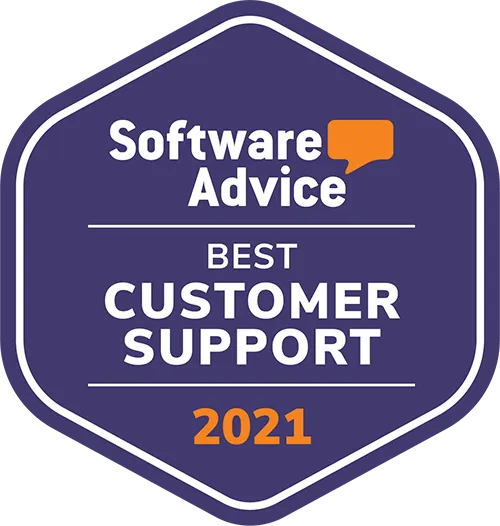It wasn’t a hard choice to select SmartSurvey. Not only did they understand what we were looking to achieve right from the start, they presented a solution that represented everything we needed.
Types of Survey
Types of Survey

The over-arching objective of a survey is to gather feedback – information, opinion, intention – from your target audience. But survey data collection methods take many forms, each suited to the audience or distribution method. Read our guides to the most common survey types, and their uses, pros and cons.
- Online surveys
- Offline surveys
- Email surveys
- Web surveys
- Mobile surveys
- SMS surveys
- Paper surveys
- Kiosk surveys
- Telephone surveys
- Face-to-face surveys
- Linear vs. non-linear surveys
Survey types by distribution
Whether you are surveying voters, customers, employees or attendees, capturing feedback from patients, or undertaking market research, there are a wide variety of ways to distribute a survey. Broadly, these break down into online and offline choices, each with their uses, strengths and weaknesses.

Online surveys
Online surveys have become the most popular way of reaching out to respondents, whether they be current or prospective customers, employees, or patients. In fact, you can create and distribute pretty much any type of survey online, however simple or sophisticated. By using online distribution, responses can be collected and analysed quickly, even in real time.
Strengths
Easy to distribute: online surveys make it easy to reach individuals regardless of their time zone or location, and via a wide range of methods including email, website embeds and even via text message.
Flexible to build: using online survey software lets you easily brand and edit your surveys, whilst allowing smart question types such as skip logic and branching.
Cost-effective: online surveys avoid printing and postal costs and remove the need to be there in person while the respondent fills out the survey
Anonymous: because online surveys remove the need to complete the questionnaire in the presence of an interviewer, privacy can be ensured, which also promotes trust and honesty in participant responses.
Weaknesses
Technology dependent: being distributed digitally, online surveys assume access to a computer, smart phone, or tablet, long with internet connectivity, which could exclude some use cases or demographics.
Misunderstandings go undetected: online surveys lose the benefit of an having an interviewer present, to detect confusion or provide clarification. However, this is not unique to online surveys, as an offline, paper-based survey can be equally impacted when completed without supervision. In either case, spoiled questionnaires are a more likely occurrence without careful attention in the design stage.

Offline surveys
Offline surveys are those that are either paper-based and printed or used in offline mode on a smartphone or tablet. Whilst less efficient and harder to distribute than online versions, they do offer benefits in some situations, and regardless, remain popular in some less technologically developed environments.
Strengths
Remote access: sometimes electrical power or internet access is simply unavailable; remote tourist locations, rural events, or surveying customers in the field, as examples. Offline surveys overcome these challenges by allowing you to capture responses wherever you are.
Download later: offline surveys don’t have to be paper based; by using a service such as SmartSurvey Kiosk you can load an offline survey to a smartphone or tablet and take it to any location, then download responses when you’re back online.
Weaknesses
Inflexible: offline surveys, especially those you need to print out to distribute, make making edits less convenient; a misspelling or other text error can mean hundreds or even thousands of surveys must be thrown away and reprinted.
Labour intensive: unless you are using a digital offline solution, responses will need to be collated manually. This can mean longer lead times before the feedback is usable whilst also introducing the risk of human error through data entry mistakes or incorrect interpretation of respondent handwriting.
Types of online survey
Online data collection methods include a range of ways in which to collect feedback digitally and can be used independently of each other or in combination for even greater reach.
Email surveys
Email surveys are perhaps the most popular way to get questionnaires in front of recipients online. Our fully functional email survey tool is designed to save time and produce better data, whether from customers, employees, constituents or business contacts.
Strengths
Personalisation: if you use a survey platform that allows you to upload your contacts, you can personalise your survey email messaging to the individual, improving engagement and the user experience.
Monitoring: if the recipient’s email program supports the Open Tracking standard you can monitor metrics such as opt-out rates, open rates, survey views and the overall status of the response.
Automation: emailing surveys allows for automated follow-ups based on the status of the users’ engagement. Reminders can be scheduled for a specific time frame and tailored dependent upon whether a survey email is yet to be opened, or the survey link yet to be accessed.
Weaknesses
Sensitivity: as a method of communication, email is probably the most prone to spam and overuse. So, it is essential – legally and reputationally – to ensure you have permission to send your email, and that any follow up communication is appropriate and measured.
Web surveys
Web popup surveys (aka website intercepts) really come into their own when you don’t have an audience list to send your online surveys to. Whether used as exit surveys or to collect feedback on specific pages, they are a great way to elicit feedback as your customers use your website.
Strengths
Reach: web surveys really come into their own when you don’t have an audience list to send your online surveys to. By inviting website visitors to engage, you can capture feedback from people who are not yet known to you.
Relevance: if you want to survey existing customers only, you have the flexibility to place your popup on appropriate pages or to show your survey to logged-in users only. For all visitors, you can choose to survey only those people who visit a particular page or section of your site.
Weaknesses
Controversial: popups on websites have developed a poor reputation over the years, mainly through overuse or aggressive tactics to get them noticed. But used smartly, with the right message and triggers, they can instead have a positive impact, by allowing visitors to express opinions, give feedback, and feel noticed.
Mobile surveys
Mobile surveys are a powerful way to improve the reach of your surveys, as most mobile phone users now use smartphones, whilst the use of tablets in home and work settings continues to grow.
Strengths
Popular: mobile has eclipsed desktop computing as the more common way to access the internet. Some business settings are still more likely to see surveys completed via desktop, but for business to consumer cases, mobile is increasingly likely where your subjects will be.
Weaknesses
Screen size: even with improvements in screen resolution and the trend toward larger phones, mobile devices by their nature offer less screen real estate than desktop computers. Screen sizes also vary widely across phones and tablets and even between devices from the same manufacturer. But how do you know what device the respondent will use, or if they’ll use mobile at all? Choosing a mobile responsive design for your survey is essential.
SMS surveys
SMS surveys, whereby you send a link to your questionnaire via text message, allows respondents to access your survey easily and at their convenience. Plus, you gain from the high degree of engagement people already have with their phones.
Strengths
Better engagement: Respondents tend to treat SMS with higher priority than email, increasing response rates from this method.
Convenient: respondents can access your survey on the go, at a time that suits them.
Immediate: because of our proximity to our phones, SMS is a great way to capture time sensitive, even instant, feedback. SMS is an excellent choice for distributing surveys such as NPS or the Friends and Family Test.
Weaknesses
Need for brevity: SMS surveys may not lend themselves to longer surveys, as the smaller screen size and the demand for attention from other apps and notifications mean attention spans can be shorter.
Types of offline survey
Offline data collection methods can still have their place in a research project, either due to an absence of internet connectivity, the demographic being surveyed, or simple familiarity with this older method of data capture.
Paper surveys
Paper surveys are still popular in some settings and for some demographics. They can be useful where internet access is unavailable (although offline digital surveys are available, allowing responses to be downloaded later).
Strengths
Familiarity: most audiences are likely familiar with paper-based forms, especially important among audiences (or interviewers!) who are less comfortable using technology.
Group use: whilst online surveys can still be used to survey groups, such as capturing feedback from a room of training course attendees, some find handing out paper forms to complete and hand back to be more convenient to administer.
Weaknesses
Labour-intensive: whilst paper surveys can be just as quick to complete as their digital cousins (except where features such as skip logic route users through a shorter survey), they take more time to compile the results, so prolonging the wait for insights.
Human error: manually collating survey results, such as into a spreadsheet, introduces the risk of human error in the input and interpretation of users’ handwritten responses.
Security: paper surveys can increase the risk of privacy breaches, especially where sensitive and personally identifiable data is requested. Online surveys by comparison can be password protected and made available only to authorised individuals.
Costs: paper surveys need to be printed, incurring costs which are magnified if errors or amendments require replacement questionnaires to be re-run. They also incur extra costs through the need to distribute, gather and collate them manually.
Environmental concerns: in many business and consumer environments it is increasingly frowned upon to ‘waste’ paper.
Kiosk surveys
Kiosk surveys are a popular way to gather feedback in-store, at events, within hospitality settings such as hotels or restaurants, or for offline situations where data is captured digitally but without access to the internet. They take the form of tablets or other touch screens and are an especially effective way to capture net promoter scores or to measure customer satisfaction at the point of transaction.
Strengths
Use offline: Kiosk surveys allow responses to be captured digitally without an internet connection, avoiding the need to resort to manual paper-based surveys.
Real-time feedback: by capturing responses at the point of transaction, kiosk surveys let you gain more accurate and immediate feedback from respondents.
Weaknesses
Visibility: unless the presence of the kiosk is made clear users might miss (or simply ignore) your survey. This is especially the case in retail environments where displays of merchandise and promotions compete for attention.
Misuse: without supervision, anyone can submit a survey, raising the possibility of spoiled and irrelevant responses getting submitted.
Telephone surveys
Phone surveys can still prove beneficial in some circumstances, despite the rise in popularity of online surveys.
Strengths
Personal: the interaction with the interviewer can be a more ‘human’ experience compared to surveys taken in isolation.
Interactive: a skilled interviewer can answer and correct any misunderstandings as they occur.
Weaknesses
Misunderstanding: outbound surveys calls, especially when unsolicited, run a risk of being treated as telesales or a nuisance calls. this places great importance on the communication skills of the interviewer to introduce the purpose of the call quickly and clearly, and to inspire a willingness to participate.
Impatience: because non-personal phone calls can seem intrusive, surveys need to be kept to a length that respondents will tolerate.
Interruptions: without the ability to sit with the participant, or to leave them to complete a survey unattended, there is always a risk of the call getting interrupted or cut short.
Face-to-face interviews
Face-to-face surveys are conducted, as the name implies, through a meeting of the interviewer and survey respondent. Whether captured digitally or onto paper questionnaires, the interviewer will normally ask the questions and record the subject’s responses.
Strengths
Clarification: the presence of an interviewer means that any uncertainty on the part of the participant is easier to observe, whilst clarifications and corrections are easily given.
Session recording: interviewers can record the survey interview so that the questioning and responses can be played back and reviewed if required.
Depth: interviewer-led surveys allow for more open-ended questions to be asked and captured.
Weaknesses
Loss of anonymity: unlike online and offline survey methods that do not require the presence of a third party, face-to-face interviews do not allow for anonymity. For surveys of a sensitive nature this might lead to reticence or modified behaviours (see bias, below).
Risk of bias: you run the risk of participants modifying their responses based on the presence of an interviewer. Examples could include the interviewer giving verbal or non-verbal cues as to how to answer (interviewer bias), or the interviewers visual appearance – dress, manner, etc – might create positive or negative reactions in the participant (social bias), or the participant might change their behaviour simply because they are being observed (the Hawthorne effect).
Costs: the need to employ an interviewer and cover the time and cost of travel make interviews an expensive method when compared to online distribution.
Reach: face-to-face interviews necessitate surveys being undertaken within a set location or at least a smaller geographical area than might be desirable.

Other survey types
Linear vs non-linear surveys
Every day, we see thousands of surveys created, and most follow a fairly straightforward linear path. However, for many of our public sector customers, we encounter surveys or consultations that are particularly complex, lending themselves to a non-linear survey format.
Both survey types serve different purposes, creating different experiences for respondents, but the outcome remains the same—ensuring that the information you gather is both relevant and insightful.
Survey types by audience
Surveys help you better understand the needs, opinions and experiences of your market, customers, employees, or stakeholders.
How are we different?
UK based
Your data will be stored and processed here in the UK for your peace of mind.
Fanatical support
We pride ourselves on going above and beyond for our customers, providing expert advice and support whenever you need it.
You're in safe hands
Our secure platform and robust data protection measures ensure your data is safe and secure with us. We are ISO27001 and Cyber Essentials Plus certified.
We're human
We understand the importance of personal interaction, which is why we offer a human touch alongside our cutting-edge technology.
Accessibility matters
We're committed to making our surveys accessible to everyone, with a range of features to support those with disabilities.
Unlimited responses
With no limits on the number of responses you can collect, you can be sure your survey will reach as many people as possible without it being cost prohibitive.

Don’t just take our word for it
Over 500,000 users have registered to use SmartSurvey.


We couldn't be happier with SmartSurvey, we love its functionality and flexibility. This means we have been able to use one survey tool across many parts of the business.








Get in touch
We are ISO27001 certified, registered under the Data Protection Act and fully compliant with EU Privacy Laws.
Access to a knowledgeable account manager for personal assistance for when you most need it.
Our friendly design team is on hand to assist with any bespoke design and custom development requests.
We succeed if you succeed. Our goal is to help you carry out effective research and we’re here to help you achieve that.
